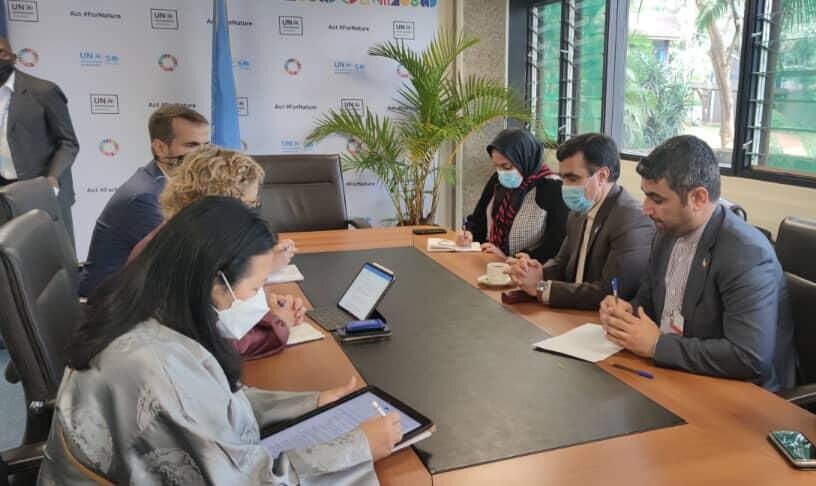UNEP lauds Iran's environmental approach

TEHRAN – Inger Andersen, Executive Director of the United Nations Environment Program (UNEP), has praised Iran’s approach toward environmental protection.
“I realized that Iran is also celebrating the 50th anniversary of the establishment of the Department of Environment. While congratulating this event, I would like to say that this news is impressive because few countries have a long history of establishing an environmental organization,” she said.
She made the remarks in a meeting with Ali Salajegheh, Department of Environment chief, on the sidelines of the Fifth Session of the United Nations Environment Assembly (UNEA-5) held in Nairobi from February 28 to March 2.
Kenya also established an environmental organization in 1974, but most countries began to seriously consider the issue after the Rio Summit in 1992, she explained.
Environmental measures and protection of natural resources, waste management, and other measures show Iran's environmental approach, she further noted.
Pointing out that Iran's natural climate is very variable, Salajegheh said that in Iran, precipitation varies from less than 10 mm in the desert to more than 2,000 mm in the Hyrcanian forests per year.
The area of protected areas has been increased by 11 percent and we have used local communities in the management of these areas. Good measures have also been taken to raise public awareness in local communities.
Referring to the great diversity of wildlife species in Iran, he noted that there are many endangered species that climate change conditions have contributed to these risks. Unfortunately, with the drying up of wetlands and the increase in drought, biodiversity loss has intensified.
In the field of human-environment and prevention of water, soil, and air pollution, as well as wastewater treatment and waste management, valuable measures are being taken. We have also passed laws and instructions for water, soil, and air pollutants and communicated them to all responsible bodies, he said.
Human activities degrade ecosystems
Iran has a high diversity of species due to geographical conditions, climatic diversity, huge water resources of the Caspian Sea in the north and the Persian Gulf, and the Sea of Oman in the south.
According to the latest studies, about 1,300 species of vertebrates, including mammals, birds, reptiles, amphibians, and aquatic fish, about 30,000 species of invertebrates, and 8,000 species of plants have been identified in the country.
Unfortunately, over the past two decades, human activities have led to alarming degradation of ecosystems, deletion of genes, species, and biological capabilities; Human threats to biodiversity have accelerated the most over the past 50 years over the entire history of human life.
Out of 1,300 species of animals in the country, 130 of which are endangered and threatened, Hassan Akbari, deputy head of natural environment and biodiversity of the Department of Environment, said in December 2021.
FB/MG
